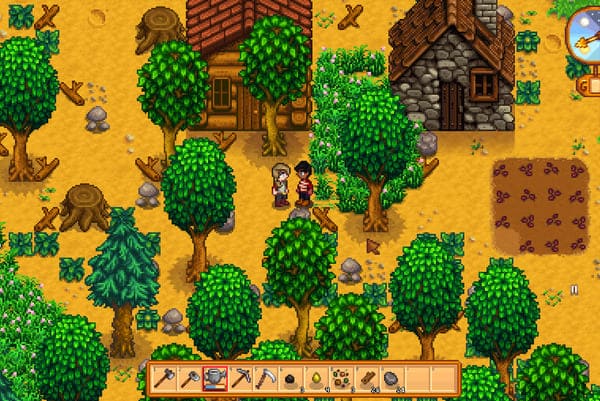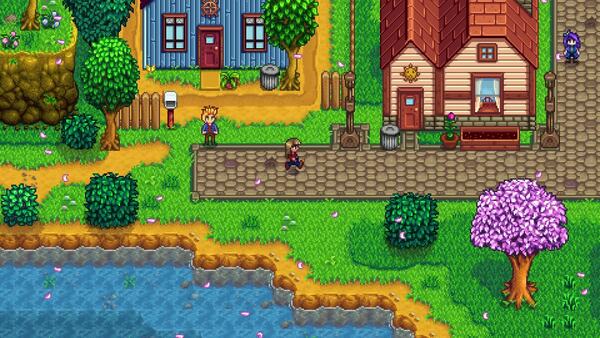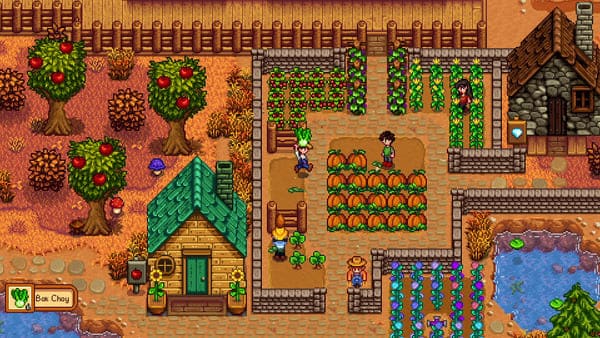Introduction
Stardew Valley has enchanted millions of players with its blend of farming, crafting, and social simulation. This engaging game allows you to escape the hustle and bustle of modern life and immerse yourself in the joys of rural living. Whether you’re just starting your farming journey or looking to optimize your gameplay, this comprehensive guide will provide you with essential tips, tricks, and strategies. From crop selection to mining and animal husbandry, let’s dive into the wonderful world of Stardew Valley and help you become a farming expert.

Getting Started: Your First Day on the Farm
Your adventure in Stardew Valley begins with a move to your grandfather’s old farm. The first day is crucial as it sets the tone for your entire farming journey. Here are some key tips to ensure you start off on the right foot:
1. Clear Your Farm
On your first day, take some time to clear the debris on your farm. This includes cutting down weeds, breaking rocks, and chopping down trees. Clearing your farm not only helps you gain resources but also gives you a clearer layout for planning your farm’s design.
Gather Resources
As you clear the land, make sure to collect wood, stone, and fiber. These resources are essential for crafting basic tools and building structures. You’ll need them for:
- Crafting a Chest
- Building a Furnace
- Creating Scarecrows
2. Meet the Locals
While exploring your farm, take the time to introduce yourself to the townspeople. Building relationships can unlock various events and benefits, such as recipes, gifts, and quests. On your first day, you can meet several villagers by wandering around Pelican Town.
Friendship Points
Friendship is key in Stardew Valley. Each villager has specific likes and dislikes. Paying attention to their preferences can significantly boost your relationship status. Early gifts like foraged items can help kickstart these friendships.
Choosing the Right Crops for Each Season

Crops are the backbone of your farming operation in Stardew Valley. Selecting the right crops for each season can lead to substantial profit and improved farm efficiency. Here’s what you need to know:
Spring Crops
In spring, focus on crops that yield the highest profit for your initial investment. Some of the best options include:
- Strawberries: Purchase from the Egg Festival.
- Cauliflower: Takes 12 days to grow but sells for a high price.
- Green Beans: Continues to produce after the initial growth period.
Summer and Fall Crops
As you progress to summer and fall, adjust your crop strategy accordingly. For summer, consider:
- Blueberries: A high-yielding fruit that continues to produce.
- Pineapple: Available in the desert after certain upgrades.
For fall, focus on:
- Sweet Gem Berries: High profit but rare.
- Pumpkins: A favorite for both profit and festival contributions.
Crafting and Upgrading Tools
Crafting and upgrading tools is essential for increasing your efficiency on the farm. Each upgrade improves your ability to gather resources and manage your crops more effectively.

Basic Tools
At the start, you’ll have basic tools: the axe, pickaxe, hoe, and watering can. Prioritize upgrading your watering can and hoe early on to simplify your farming tasks. Efficient watering and tilling will save you time and energy.
Tool Upgrades
Upgrading tools requires resources and gold. You can upgrade your tools at the Blacksmith. Here’s a suggested upgrade path:
- Steel: Requires copper bars and some gold.
- Gold: Requires iron bars and more gold.
Crafting Essential Items
Crafting is a vital part of Stardew Valley. Some items you should prioritize include:
- Chests: For storage management.
- Scarecrows: To protect your crops from crows.
- Furnaces: To smelt ore into bars.
Animal Husbandry: Building a Livestock Empire
Once you’ve established a solid crop routine, it’s time to delve into animal husbandry. Raising animals can significantly increase your income and provide valuable resources.
Choosing the Right Animals
In Stardew Valley, you can raise various animals, including chickens, cows, goats, and sheep. Each animal has its benefits:
- Chickens: Lay eggs daily; a great starter animal.
- Cows: Produce milk, which can be turned into cheese.
Animal Care
Ensure your animals are well cared for. They require food, shelter, and affection. Feeding them hay or allowing them to graze is essential for their happiness and productivity. A happy animal produces more goods!
Building a Barn or Coop
Invest in a barn or coop early on. Upgrading these facilities allows you to house more animals and unlock special products like goat milk and duck eggs. Consider the following when building:
- Coop: Essential for keeping chickens and ducks.
- Barn: Necessary for cows, goats, and sheep.
Fishing: A Rewarding Side Activity
Fishing in Stardew Valley is not only relaxing but can also be a lucrative endeavor. It’s a great way to diversify your income and gather resources.
Understanding the Fishing Mechanics
Fishing requires patience and practice. You’ll need to use the right bait and tackle to improve your catch rates. Each body of water offers different types of fish, so explore thoroughly. Pay attention to the weather and seasons, as they can affect fish availability.
Fishing Gear
As you progress, you can craft or buy better fishing rods and bait. Consider investing in:
- Basic Rod: Great for beginners.
- Iridium Rod: Allows you to use tackle and bait for better results.
Best Fishing Spots
Some of the best fishing spots include:
- The Ocean: Home to unique fish, especially during specific seasons.
- The River: Great for trout and other freshwater fish.
- The Mountain Lake: Known for catching rare fish.
Mining: Unearth Hidden Treasures
The mines in Stardew Valley are rich with resources and valuable treasures. Mining not only provides ores and gems but is also essential for crafting and tool upgrades.
Entering the Mines
Access the mines by heading north of the Carpenter’s Shop. You’ll encounter various monsters and ores, so prepare accordingly. Bring food and healing items to ensure you can survive the dangers that lurk below.
Mining Strategies
Focus on mining during rainy days when farming tasks are minimal. Some strategies include:
- Use Bombs: To clear multiple rocks quickly.
- Always Carry a Pickaxe: Essential for breaking rocks and collecting resources.
Resource Management
Be mindful of how you manage your inventory. Prioritize collecting ores and rare gems, and make regular trips back to store your findings. Upgrading your backpack early on can also aid in this, allowing you to gather more resources without frequent trips.
Building Relationships: The Heart of Stardew Valley
Interacting with the villagers of Pelican Town is a core component of Stardew Valley. Building relationships can unlock powerful bonuses and contribute to your overall happiness in the game.
Gift Giving
Gifting is a significant way to improve friendships. Each villager has specific likes and dislikes, so take note of them. On birthdays, giving a loved item can greatly boost your friendship level. Use the following strategies for gifting:
- Observe: Pay attention to villagers’ comments and preferences.
- Regular Gifts: Consistently give gifts throughout the year.
Friendship Events
As your friendship levels rise, you’ll unlock unique events and cutscenes. These can provide valuable insights into the characters and deepen your connection. Special events can lead to quests or gifts that enhance your gameplay experience.
Marriage and Family
Once you’ve built a strong relationship with a character, you can pursue marriage. Each spouse offers different benefits that can enhance your farming experience, such as helping with chores or providing special items.
Seasonal Events and Festivals
Stardew Valley features various seasonal events and festivals that provide fun mini-games and opportunities for rewards. Participating in these can be incredibly beneficial for your farm and relationships.
Spring Festivals
During spring, events like the Egg Festival and Flower Dance provide chances to interact with villagers and earn unique rewards. Participating can boost your relationships and even provide special items that are not available during regular gameplay.
Summer and Fall Festivals
Summer events include the Luau and the Dance of the Moonlight Jellies. Fall brings the Stardew Valley Fair and the Haunted Maze. Each festival has its unique mini-games and contests, offering valuable prizes like rare items and recipes.
Winter Activities
Even in winter, there are activities to enjoy. The Festival of Ice and the Feast of the Winter Star offer opportunities to engage with villagers. Use winter to focus on mining, crafting, and preparing for the upcoming seasons.
Advanced Strategies for Maximizing Your Farm
Once you’ve mastered the basics, it’s time to delve into advanced strategies to maximize your farm’s productivity and profit.
Greenhouses and Crops
Unlocking the greenhouse allows you to grow crops year-round. Focus on high-value crops like ancient fruit and starfruit to maximize your profits. Use fertilizer to enhance growth rates and crop quality.
Artisan Goods
Consider producing artisan goods such as wine, cheese, and preserves. These items often sell for significantly more than raw crops. Investing in a variety of production equipment can lead to increased revenue.
Utilizing the Farm Layout
Plan your farm layout strategically. Group similar crops together, and consider the layout for optimal use of sprinklers to reduce daily watering tasks. Designate areas for animals, crops, and artisan equipment to improve workflow.
Conclusion
Stardew Valley offers a rich and fulfilling experience that combines farming, crafting, and socializing. With these tips and guides, you’ll be well on your way to becoming a master farmer. From your first day on the farm to building lasting relationships and maximizing your crop profits, the journey is as rewarding as the destination. Remember to enjoy the little moments, whether it’s a festival with friends or a rainy day spent fishing. Happy farming!


